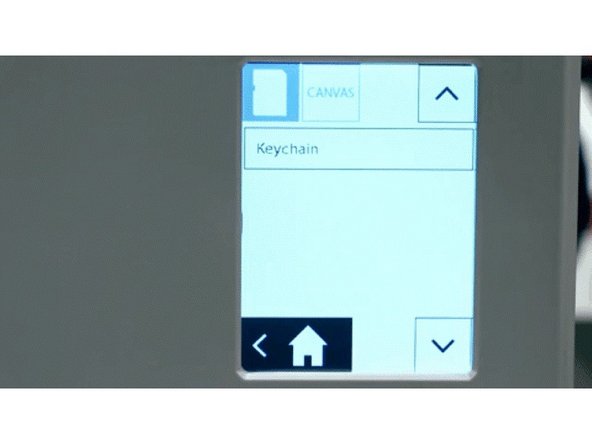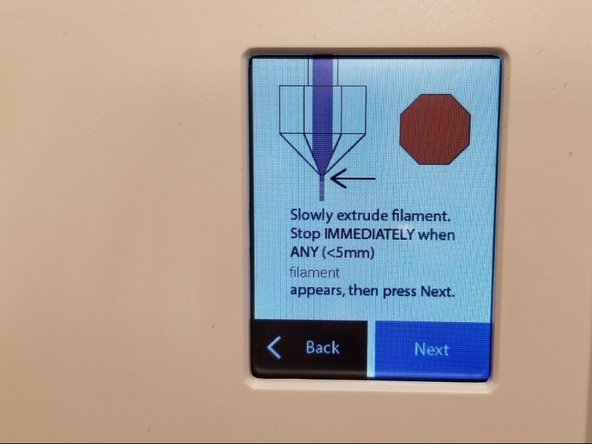Introduction
If you're not printing with a Palette, please skip this step. In the following steps Palette 2 will automatically calibrate with your printer. Palette needs to produce the exact required length for each filament so that splices reach your nozzle at the correct time. However, 3D printers aren't perfectly accurate. For example, your print file may contain 10m of filament extrusion instructions, but your printer might only use 9.7m of filament. These small errors add up over a print, slowly throwing off the alignment of splices.
Calibration gives Palette a baseline for the amount of error in your printer's filament consumption so that filament production is adjusted accordingly. This is especially crucial at the start of a print, before Palette's live feedback systems kick in.
Before you begin the calibration print, please make sure that you have already completed the following:
Update Palette 2 firmware. Always ensure that you're using the most recent version of our firmware as we continuously improve features.
Set up your Palette 2, 3D printer, and Filament holder. When you turn on Palette 2 for the first time it will guide you through the initial setup. Make sure that the following have been completed:
- Palette is positioned close to your printer
- Palette is secure on its stand
- The small Teflon tube (50cm) is fastened into Palette 2
- Power supply is firmly connected to Palette and the wall outlet
- Filament is untangled and spools are positioned to feed filament easily
-
-
On Palette screen, navigate to Next > Other and then select “Custom” and then using the arrows, change the amount to the corresponding length. 2 Go - 92 cm 2 - 102 cm
-
If you don’t see “Next” select Settings > Preferences > Outgoing Tube Length select “Custom” and then using the arrows, increase the amount to the length indicated in the chart above.
-
Tube length is printer type specific. The tube lengths in the chart above should be set in Palette when you are using the corresponding UM printer. If you switch your Palette to another printer, ensure that you set the tube length back to the appropriate tube length based on the small medium or large tube that you have set up for that printer.
-
-
-
Download the dual-color keychain: https://www.thingiverse.com/thing:330157...
-
Slice the keychain model in CANVAS. After slicing in CANVAS is complete you will have two files. The first is a SEEM file that will have the extension MAF (Mosaic Accessory File). You'll also receive a modified Gcode file. Transfer the MAF to Palette 2's SD card manually. Transfer the modified Gcode file to your printer.
-
-
-
Please disconnect the Palette 2 outgoing tube from Palette 2 by firmly pulling it out, this is a push fit connection so you will need to use a bit of force to remove it. Ensure that there is no filament in the path from this tube to the hotend. If there is, please remove the filament so that the path is clear.
-
-
-
Turn on Palette 2 and select 'Start Print'.
-
On the top left corner of the screen, you can select to load a file from Palette's SD card (MAF file) or via CANVAS Hub (MCF).
-
Palette 2 will recognize that this first time you have used it with this printer and will let you know before you start the print. Please go ahead and tap 'Next'.
-
-
-
Follow the onscreen instructions to clear the outgoing tube which you would have already completed in step 3. Load filament into the inputs, making sure not to clear filament for any inputs as clear filament is used later in the calibration process. Allow Palette 2 to output filament with the outgoing tube disconnected.
-
-
-
After 2-3 minutes the screen will prompt you to feed filament into your printer's extruder gear. Select 'Next' on the following two screens until you see the screen below that says 'Slowly extrude filament…'
-
On the Ultimaker screen select Maintenance > Advanced > Heat up Nozzle > Scroll to 210C. Wait until the temperature reaches 210C. Caution: the nozzle will be very hot through the next few steps.
-
-
-
Remove the bowden tube from the print head by removing the lock clip.
-
Find 20-30cm of clear or white PLA. Manually press this down into the print core from the top of the print head until you have purged any remaining material which was in the print head. You should only see clear filament coming from the nozzle when it has been fully purged. Pull the filament you just inserted back out before proceeding .
-
Press the bowden tube back into the print head and replace the lock clip. It is critical to ensure that the bowden tube has been inserted as deep as it can go in order to effectively restrain the Teflon tube in the print core.
-
-
-
On the Ultimaker screen return to the main menu and then select Material > Change > PLA. The printer will attempt to unload and will ask you to remove material. Select 'Ready' and then 'PLA'.
-
Feed the filament Palette has created into the Palette tube connected to the Ultimaker extruder. Press the filament in until you feel that it has been gripped by the drive gear of the printer. Simply gripping the filament with two fingers is a quick way to check if it is being moved by the extruder and has engaged properly.
-
Please ensure you hold the outgoing Teflon tube and that you are prepared to connect it to the Palette 2 without having it tangle as the Ultimaker pulls filament in. Press 'Ready' on the Ultimaker screen and it will start to load, once the printer has finished loading process, press 'Ready' again immediately to stop the loading.
-
At this point the filament will have been moved to the entry of your Ultimaker hotend. In the next steps we will manually move filament to the tip of your nozzle. On the Ultimaker screen select Maintenance > Advanced > Move Material.
-
Continue rotating the dial slowly until you see the new color form the filament you are loading appear. For example, if the filament you are loading is blue and you had purged the nozzle previously with clear filament then stop loading as soon as you see a slight amount of blue filament come through the nozzle.
-
Press 'Next' and then 'Save' on the Palette screen to lock in this loading offset value.
-
-
-
Start the print on the Ultimaker screen by navigating to Print > Select the calibration print. If you get a message 'This print job is not suitable for this printer…', select 'Ignore'. Please note the printer may take 5-6 minutes to initialize. It will start automatically after this.
-















